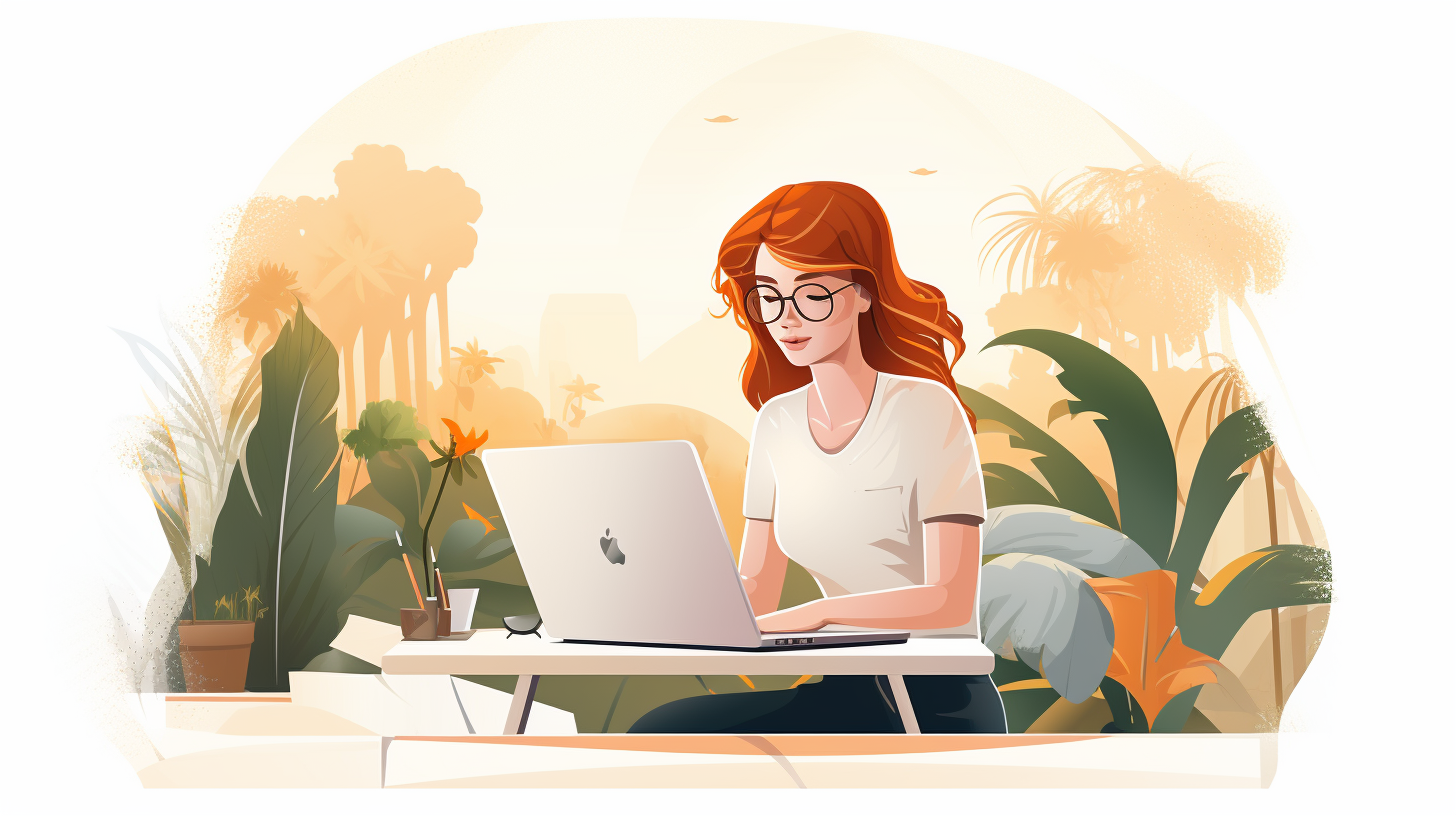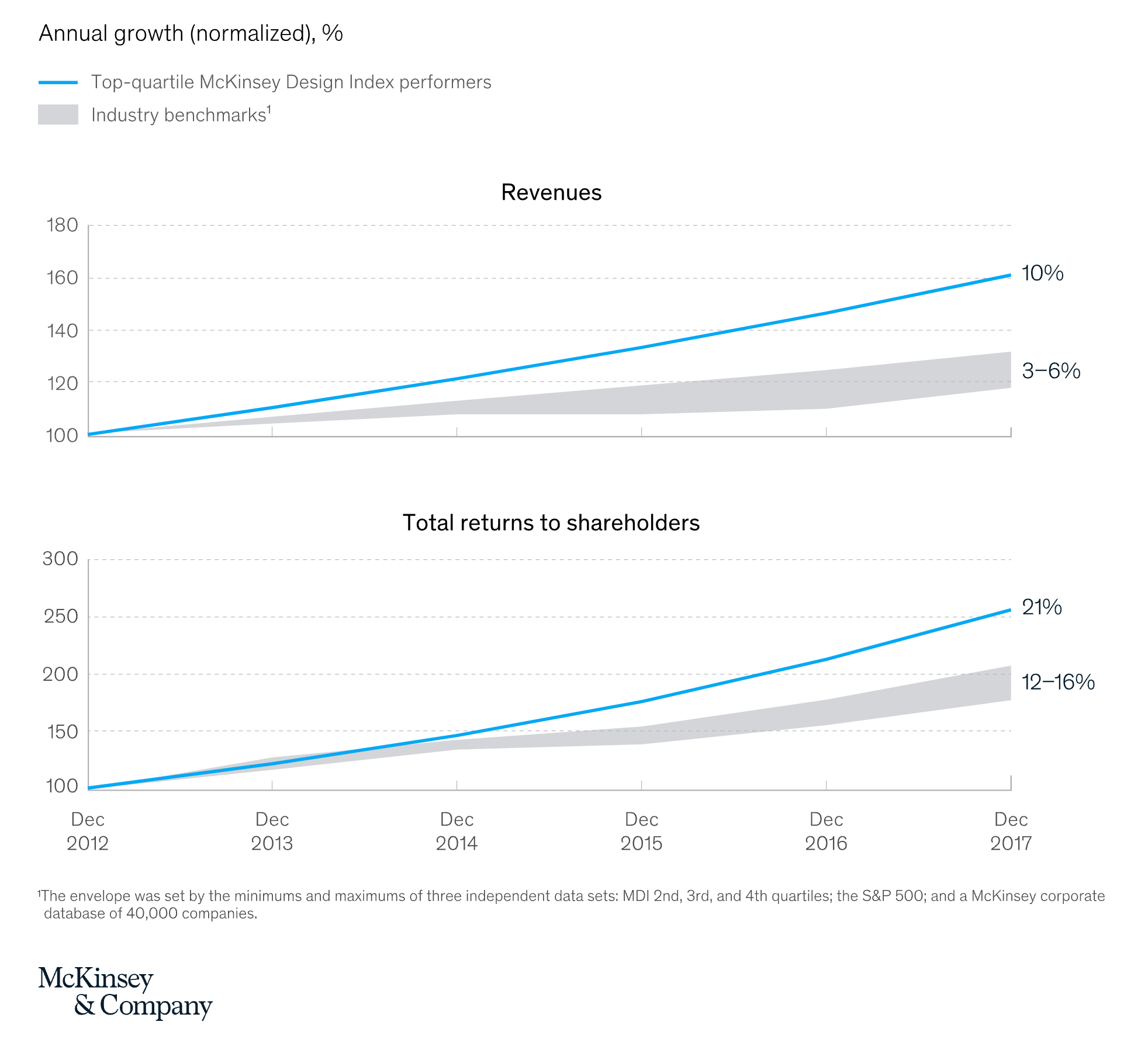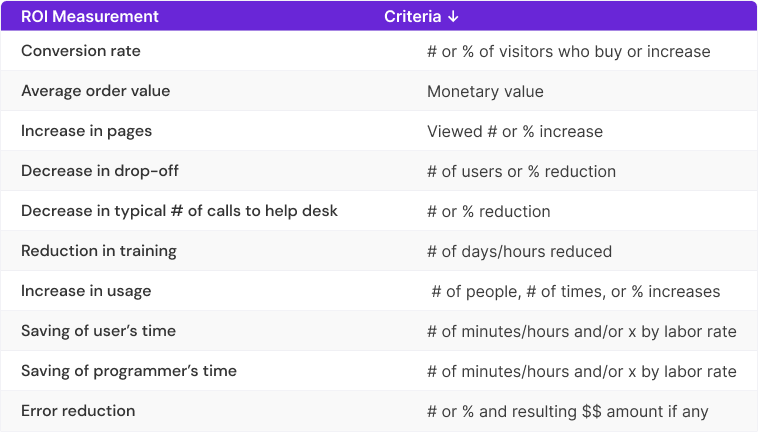Crafting Experiences for Growth: The Return On Investment of Design

Design is more than just making things look pretty. It has become a strategic imperative that can shape the trajectory of businesses, influence customer perceptions, and ultimately drive growth.
In an era where every consumer touchpoint is an opportunity to make an impact, design has emerged as a powerful tool to foster meaningful connections. Whether it's a seamless user interface that guides users effortlessly or a retail space that evokes emotions, these experiences have the potential to shape brand loyalty, conversion rates, and overall profitability.
Design's worth is more than just aesthetic, it leads to real financial results.
Effective design has the potential for substantial growth, but many still underestimate its transformative capabilities. As a rule, Great Experience designers must empathize with users as human beings, not just as data points. Experience designers do a lot of work, like research and testing, that people outside the field might not realize. The goal is to create a win-win situation where customers get good value and the business gets paid by loyal customers who refer others.
From the boardroom to the digital realm, we'll explore how forward-thinking organizations leverage design not only to enchant their audiences but also to fortify their financial performance. I'll even throw a couple of use cases here and there of real-world examples, where design transforms from an intangible asset to a measurable contributor to the bottom line.
The Profitable Prowess of Great Experience Design: A Case for Tangible Impact
There's strong evidence showing that when businesses weave User Experience (UX) practices into their app, website, and system design, they gain an edge over competitors. This isn't just from one or two researchers—it's a consistent finding.
Cross-industry research shows that if 10% of a project’s budget is allocated to usability and user experience, stakeholders can expect an 83% return on the KPIs of the project.
A study conducted by McKinsey & Company revealed a significant connection between high MDI scores and outstanding business performance. Companies that ranked in the top quartile of the McKinsey Design Index (MDI), which evaluates design strength and its correlation with financial performance, achieved remarkable growth in both revenue and total returns to shareholders (TRS). Over a five-year span, these top-quartile MDI scorers demonstrated revenue growth 32 percentage points higher and TRS growth 56 percentage points higher than their industry counterparts.

" The goal is to provide users with the best possible user experience in a way that provides your organization with the best possible business results."
- Jeff Horvath VP - UX Strategy HFI
Here's the thing: Good UX isn't just about making things pretty. It's about making things work smoothly and understanding what users need. When businesses nail this, it sets them apart. Instead of just having cool features, they create experiences that people love.
Plus, research confirms that solid UX design increases the chances of turning visitors into customers. When things are easy to find and do, more people follow through with buying something or signing up for a service. That's a big win for any business aiming to grow.

The relationship between great experience design and profitability is most direct & measurable in e-commerce. Websites & apps that are easy to use bring visitors efficiency and productivity. This is especially important for online shopping, where it means having a smooth and enjoyable experience. You don't waste time looking for things or trying to figure out how to buy them. It's like a shopping trip where you know where to go, how much each item costs and where to pay securely.
This idea connects with the rise of e-commerce templates that follow rules for making things easy to use. These templates ensure every shopping experience online is smooth and satisfying, just like shopping in person, if not better.
What made Google's so popular in the first place is that they made it so easy to find the most relevant information, what they realized however, was that the experience didn't stop at the search, but it extended to the result as well. Google now favors websites with the best UX for it's rankings, optimizing for a more delightful web. Surely the billions of daily search data points may have contributed to this decision.
There's a strong case to be made for the ROI of design. Most businesses are not altruistic, free-for-all service. Where there is an investment to be made there has to be a financial outcome. But how would you measure it ? What areas should be impacted most ?
The goal is to provide users with the best possible user experience in a way that provides your organization with the best possible business results.
Challenges in Measuring the ROI of UX Design
Quantifying the direct impact of UX design on financial metrics like revenue can be challenging. While good UX can lead to increased user satisfaction, loyalty, and retention, attributing these factors directly to design efforts can be complex.
One of the primary reasons for the difficulty in measuring the Return on Investment (ROI) of UX design lies in the intricate web of interactions that underlie user behaviors. Effective UX design encompasses not only the visual aesthetics but also the underlying functionality, navigation, and interaction flow of a product or service.
Users' actions are influenced by many factors, like past-experiences, psychological biases, and external factors. Isolating the impact of design choices from these complex interactions requires smart data collection, analysis, and a deep understanding of user behavior patterns.
The Hidden Influence of Seamless Experiences
UX design's impact often operates beneath the surface, influencing users' decisions and behaviors without drawing attention to itself. This subtlety adds another layer of complexity to the measurement challenge. While UX design significantly shapes the user journey, its influence might not be immediately perceptible. Users might seamlessly navigate through a platform, completing tasks effortlessly, without being explicitly aware of the design's role. This "invisible" impact can lead to the misconception that effective UX simply occurs organically, diminishing the perceived value of intentional design efforts.
The Enigma of Attribution
One of the central challenges in measuring the ROI of UX design lies in the intricacies of attribution. While it's clear that good UX design can lead to heightened user satisfaction, increased loyalty, and improved retention rates, attributing these outcomes directly to design efforts is a complex endeavor. User behaviors are influenced by an amalgamation of factors—ranging from the visual appeal of the interface to the underlying functionality, previous experiences, and even external influences. Untangling this web of interactions to pinpoint the precise influence of design choices requires more than just a cursory glance; it demands a comprehensive understanding of user behavior dynamics.
The Long Road to Impact
For some products, another part of the puzzle is the slow reveal of the impact of UX design. Unlike quick marketing strategies or immediate sales pushes, the effects of UX design can be a gradual unfolding. People might not instantly embrace a new look or feature, but as time passes and they get used to it, things start to click. Loyalty and good word-of-mouth recommendations build up over time. This means measuring the return on investment (ROI) of UX design requires a long-term approach, understanding that the real benefits might stretch beyond the initial launch of the product.
A Bridge to Clarity
But here's the crux: measuring the ROI of UX design doesn't have to be a challenge. While some complexities exist, solutions also abound. Data-driven approaches, such as user analytics and A/B testing, can shed light on the impact of design changes on user behavior. By meticulously analyzing user interactions and tracking key metrics, businesses can gain insights into the direct influence of design modifications. Additionally, conducting user surveys and feedback sessions can provide qualitative insights into how users perceive and value design enhancements.
The Return On Investment from User Research is Substantial.
IEEE listed 12 reasons on why software companies fail, where up to 15% of software projects will be abandoned before or shortly after delivery as hopelessly inadequate. In fact, studies show that software specialists spend up to 50% of their time on avoidable reworks rather than value-added work. The cost of rework is up to 100% more than if done right the first time.
Amongst the reasons, are badly defined requirements, poor communication with customers, dev & users, & stakeholder politics. All of which are part of the work of Experience designers, where they conduct Stakeholder interviews, user testing & research, user-centered design. This means that having UX designers onboard the get go can help solve at least 3 out of the 12 reasons on why software fails.
Back in 2006, there was a year-long test that's often brought up when people in the UX world talk about how valuable good user experience design is.
The idea of the UX Fund test was simple: companies with awesome user experiences would have their stock prices go up.
Two UX designers, Geoff Teehan and Jon Lax, looked at 10 companies in their UX Fund and put $50,000 in it. These companies included big names like Apple, Target, Electronic Arts, Research in Motion (RIM), Progressive Insurance, and JetBlue Airways. What did they have in common?
- They really cared about how their products and websites looked and worked.
- People loved their products and were loyal to them.
- Customers usually had good experiences doing business with them.
After a year, Teehan and Lax saw that the fund grew by 39.3 percent, doing better than all the big stock market numbers. But, it's not just a math thing. Teehan and Lax knew there were lots of things playing into this—some helped them, some didn't.
Increased Conversion Rates and Revenue Growth
When the path from discovering a product to making a purchase is intuitive and frictionless, users are more likely to complete the journey. This has an immediate impact on revenue generation. Businesses that prioritize good UX see a significant uptick in sales as users confidently move through the buying process. Moreover, the delight users experience during these transactions leaves a positive lasting impression, encouraging them to return for future purchases.
For example, when users are confronted with two software options that do and cost same, they are more likely to pick the one that's easier to use. Wixon & Jones studied a software that got a usability upgrade and it made more revenue – 80% more than its first version that didn't focus on usability. The improved system made 60% more revenue than they expected. Many customers said they bought it because it was easy to use.
A competitive edge : Elevated Brand Reputation and Differentiation
In an ocean of options, brand differentiation is a formidable challenge. Good UX, however, provides a unique avenue to stand out. A website, app, or service that not only works well but delights users communicates a powerful message: the business cares about its users and invests in delivering the best. This emotional connection becomes a key differentiator, setting the brand apart from competitors who merely focus on functionalities. As the brand's reputation grows as a provider of excellent user experiences, it becomes a magnet for customers seeking memorable interactions.
Something that most bootstrap founders don't understand...
— Dr. Saumya Sharma (@remottouch) May 18, 2023
📌Investing in good UX (research and design) = ensuring competitive growth
If you offer good experience to a user, there be gaurantee of reuse & recommendation, which just means higher sales.
Good UX is higher ROI.
Operational Efficiency and Reduced Costs
The ramifications of good UX extend to operational efficiency. Interfaces that are user-friendly and intuitive result in decreased user support needs. Users can troubleshoot, find information, and accomplish tasks independently, reducing the strain on customer support teams. This operational streamlining directly translates into cost savings and more efficient resource allocation. Moreover, the time saved in support interactions can be redirected towards strategic initiatives that contribute to business growth.
Advertising advantages
Making sure things are easy to use can make an online store stand out from other websites. It can also make one software different from another. Big companies like Compaq and Microsoft have talked about usability in their ads. But not many companies use this idea in their ads, even though it could be really helpful. This is especially true for online shopping, where many customers aren't tech-savvy and won't put up with things being hard to use.
Aligning and Measuring Business Metrics with UX Metrics
Usually, businesses think about return on investment (ROI) using the important performance measures for their own needs and depending on the problem they're trying to solve. For instance, a retail website would focus on things like conversion rate or average order size. If it's a call center app, the focus might be on reducing how long calls take. And if it's a medical device, lowering the number of mistakes becomes really important. It all depends on what's crucial for your business.
Generally, there are three kinds of indicators that work well as user experience metrics:
- Money earned – like conversions or ARPU (average revenue per user)
- Money saved – like support costs or how efficiently tasks get done
- Non-monetary outcomes – like user loyalty or how much people recommend to friends
So, before you start making any UX improvements, make sure to think about:
- In your field, which metrics can you improve to make the most money?
- How will you put the new UX changes in place?
- How do the new UX improvements match up with your product strategy right now?
79 % of users would only retry an app once or twice if it failed to work the first time
- UX Probe
Deciding on your key indicators
The first step is to clearly understand which business metrics matter for your business. Different companies find meaning in different KPIs. Once you know which key business metric work for you, you need to figure out which user experience (UX) metric can help with those business numbers. Not everything about UX needs to be measured – only what helps the business. Once you figure that out, you just need to regularly measure those numbers in a way that helps make business choices.
Amongst many, here are some examples of relevant KPIs to measure ROI :

So to make things more concrete, let's illustrate with some examples.
Example #1
Increase conversion rate
Imagine you run a money transfer app, where users can split bills & expenses by sending & receive money from family and friends. You get up to 100 users a day but you notice a high drop-off rate at the transfer page where you estimate that at 50 customers/day are abandoning your app instead of making a transfer. You decide to conduct user interviews and then conclude that users do want to make transfers, but find it very confusing and difficult to find friends on the app so they end up going with a competitor.
Let's say that each customer makes an average of 1000$ of transfers over the course of a year, where you make 50$ in fees on each of these transfers. So you are loosing around 2500$ a day, or 912 000$ a year.
If you spend 50 000$ to fix the user experience issues, then another 50 000$ for developers to implement these changes, the total investment is 100.000$. It will take your business then over 40 days to realize the investment. So in little over a month, you get your investment back.
Example #2
The cost of development and maintenance

So for example, to fix an issue you decide it required 15 changes, which would need 8 hours each to complete, and one developer for 45$ per hour, would mean that if fixed early would cost 5400$ and 21600$ if late.
Example #3:
Decrease the typical number of calls to help desk
Whenever users encounter a problem with the user experience, they might quit or seek help from support. Each support request takes time and resources from the helpdesk team, along with their hourly rates.
For a small startup, a sudden increase in users (like 1,500 new ones) could lead to financial and reputation trouble if not handled well. Fixing UX errors that cause support requests at product launch might even cost more than running a support center.
That's why investing in a user experience where users can easily find information without relying heavily on support can save costs and break the support/UX loop.
For example, you're looking to decrease your calls or chat requests center to your call center by 25%. You decide investing in the user experience to enhance your product for better self-service and intuitiveness.
You get an average of 500 000 calls to your call center, with an annual salary of 30 000$, and the average call duration is 4 minutes. Operators work 260 days a year, on a 8 hours work day. You reach out to a UX professional which estimates the cost of improvement to be 10000$ with an expected project life of 1 year. So the Total Gain from Improvement would be 110,192$, or an ROI of 11:1.
The Story of the “$300 Million Button” by Jared Spool
Over a decade ago, the tale of the $300M button created quite a buzz when it featured in the book "Web Form Design: Filling in the Blanks." Originally penned by Jared Spool and shared with Brad Frost during his book writing.
This story serves as a powerful illustration of how designs can significantly affect a business—this time resulting in a whopping $300M. It also serves as a poignant reminder of the significance of defaults, how they mold user actions, and even wield influence over power dynamics.
With just two buttons – "Login" and "Register" - appeared right after users clicked “Checkout”. The company, reportedly Best Buy, brought in a usability researcher. During tests, users gleefully filled their carts, entered the checkout process... only to hit a roadblock.
First-timers were frustrated they had to register just to complete their purchase, expressing sentiments like, “I’m not here to start a relationship, I just want to buy something.” Returning users were equally vexed; most couldn’t recall their login details.
A simple solution was put to the test. The “Register” button was swapped for “Continue as Guest”, with reassuring explanations about the next steps.
The outcomes were astonishing: customer numbers surged by 45%, translating to an extra $300M in that initial year. What's more, a whopping 90% of customers wound up creating accounts as part of the checkout process.
Ever thought UX was just frills? Think again...
— Surinder Thakur, HFI-CUA™ (@SurinderFromED) July 21, 2023
See the payoff:
- High ROI from UX
- Skyrocket conversion rate with superb UI + UX
- Say goodbye to hefty customer support costs
- Acquire and keep more customers
Want to reap these benefits?
Invest in UX now! 🚀
The Airbnb Experience : From an Arduous Flow To Dramatically Increased Bookings
Airbnb faced a big challenge with its checkout process. Different teams had been adding things to it for about ten years, which made it confusing and frustrating for users.
The checkout process that looked like three steps turned out to be much more complicated. Some guests suddenly had to do unexpected tasks, like adding a profile photo or showing their ID. This made booking a home on Airbnb feel like a never-ending process.

To fix this, teams worked together to make the checkout process simpler and more consistent. They came up with a new way of doing things called the "Hub" approach, where everything guests needed was on one page.
The results were impressive. More people started booking, way more than when they made small changes before and it far exceeded initial expectations of 0.5 to 1% improvements. This success made Airbnb launch the new checkout for all platforms sooner than planned. It even got other parts of Airbnb thinking about using the same approach.
This checkout redesign shows how working together, simplifying things, and putting users first can make a big difference. It's a major step for Airbnb in making their product better and getting teams to work together like never before.
Conclusion
Design has transcended its role as a mere aesthetic element to become a strategic catalyst for business success. Its impact extends beyond appearances, shaping customer perceptions, fostering connections, and driving tangible growth. The transformative power of design is evident in various industries, as businesses that prioritize user experience gain a competitive edge. While measuring the return on investment (ROI) of design presents challenges, data-driven approaches and qualitative insights offer avenues to understand its influence on user behavior. From enhanced conversion rates and operational efficiency to elevated brand reputation, design's value is multi-faceted.
By focusing on users as individuals and strategically aligning UX metrics with business goals, companies can amplify their financial performance.
Additional readings and ressources







